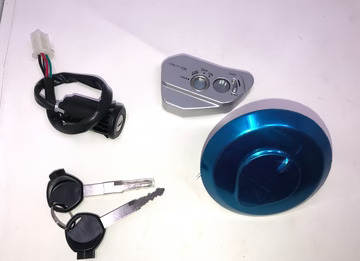Aging isn’t a sudden shift—it’s a slow, steady evolution that shows up in your skin over time. But if you’ve looked in the mirror and thought, “My face looks different lately,” you’re probably entering one of the key decades when facial aging speeds up. For many women, changes like dullness, fine lines, and subtle sagging show up long before their 50s. If you're already noticing those shifts and looking for a solution that doesn’t involve invasive procedures, EvenSkyn offers innovative tools designed to support your skin from the comfort of your home.The Science of Facial Aging: What Happens and When?
Your face is always changing—but there are a few key points in life when those changes become more visible. The late 30s to early 50s is considered the most transformative period for facial aging. This is when structural changes under the skin start to accelerate, and external signs like wrinkles and volume loss become harder to ignore.
What makes this timeframe so pivotal? It’s the intersection of multiple natural processes, including:
1. Collagen depletion
2. Fat pad migration
3. Bone density loss
4. Hormonal fluctuations
In your early 20s, your body is producing collagen at a steady rate, and your skin naturally renews itself every few weeks. But by your late 20s and early 30s, collagen production slows, and repair takes longer. By the time you hit your 40s, these shifts become visible in the form of looser skin, deepened lines, and a more tired or hollow appearance.
Understanding how your face changes through the decades can help you better care for your skin at each stage.
In your 30s:
This is often when fine lines first appear, especially around the eyes and forehead. The youthful "glow" may start to fade as skin renewal slows. Elasticity begins to dip, and you may notice makeup settling into creases that didn’t exist before.
In your 40s:
The structure of the face begins to shift more noticeably. Cheeks may flatten slightly due to fat loss, and the jawline can begin to soften. Wrinkles that were once faint become more pronounced, especially in areas where the skin moves frequently.
In your 50s and beyond:
By this time, hormonal changes—particularly in women—affect hydration, oil production, and collagen stability. Skin can appear thinner and drier, and deeper folds may develop around the mouth and eyes. Bone loss in the cheeks and jaw can subtly alter the face’s contours, making it look more sunken or less defined.
The main culprits behind visible facial aging include collagen loss, gravity, repeated facial expressions, and environmental exposure. Over the years, these factors gradually change how your skin looks and behaves.
One of the most influential internal factors is hormonal change, particularly the drop in estrogen that begins during perimenopause. Estrogen plays a major role in keeping skin thick, hydrated, and elastic—so its decline can lead to thinner, more fragile skin.
If you'd like a deeper look at the science behind skin aging, WebMD offers an excellent breakdown of how your skin ages and why.
While you can’t stop time, you can influence how your skin responds to it. Small, consistent actions add up over the years.
1. Use sunscreen every day. UV damage is one of the biggest accelerators of aging skin.
2. Stay hydrated and support your skin with nutrient-rich foods like leafy greens, salmon, and berries.
3. Limit alcohol and smoking, both of which weaken skin integrity and speed up wrinkle formation.Use targeted skincare products from
4. In addition to these habits, many women are turning to non-invasive technology to support skin health from a deeper level. Devices from EvenSkyn are designed to improve firmness and elasticity through safe, at-home treatments using advanced light and radio frequency therapy. Incorporating such tools into your weekly routine can help reinforce your skin’s natural collagen without the need for injections or downtime.
Consistency is key. Whether you're in your 30s and hoping to prevent deeper lines, or in your 50s and looking to soften existing ones, the right tools can make all the difference. And that's why EvenSkyn continues to be a go-to choice for women serious about skincare longevity.
Your face doesn’t age all at once—it changes subtly, then suddenly. While most people experience the most noticeable transformation between their late 30s and early 50s, those changes are the result of years of internal shifts and environmental impact.
The good news? You have more control than you think. By understanding when your face is likely to change the most—and taking action early—you can maintain smoother, firmer, more radiant skin well into the future.
Start building your skin’s foundation now. And remember, with tools like EvenSkyn, you can support your skin’s journey every step of the way.




Want to add a comment?